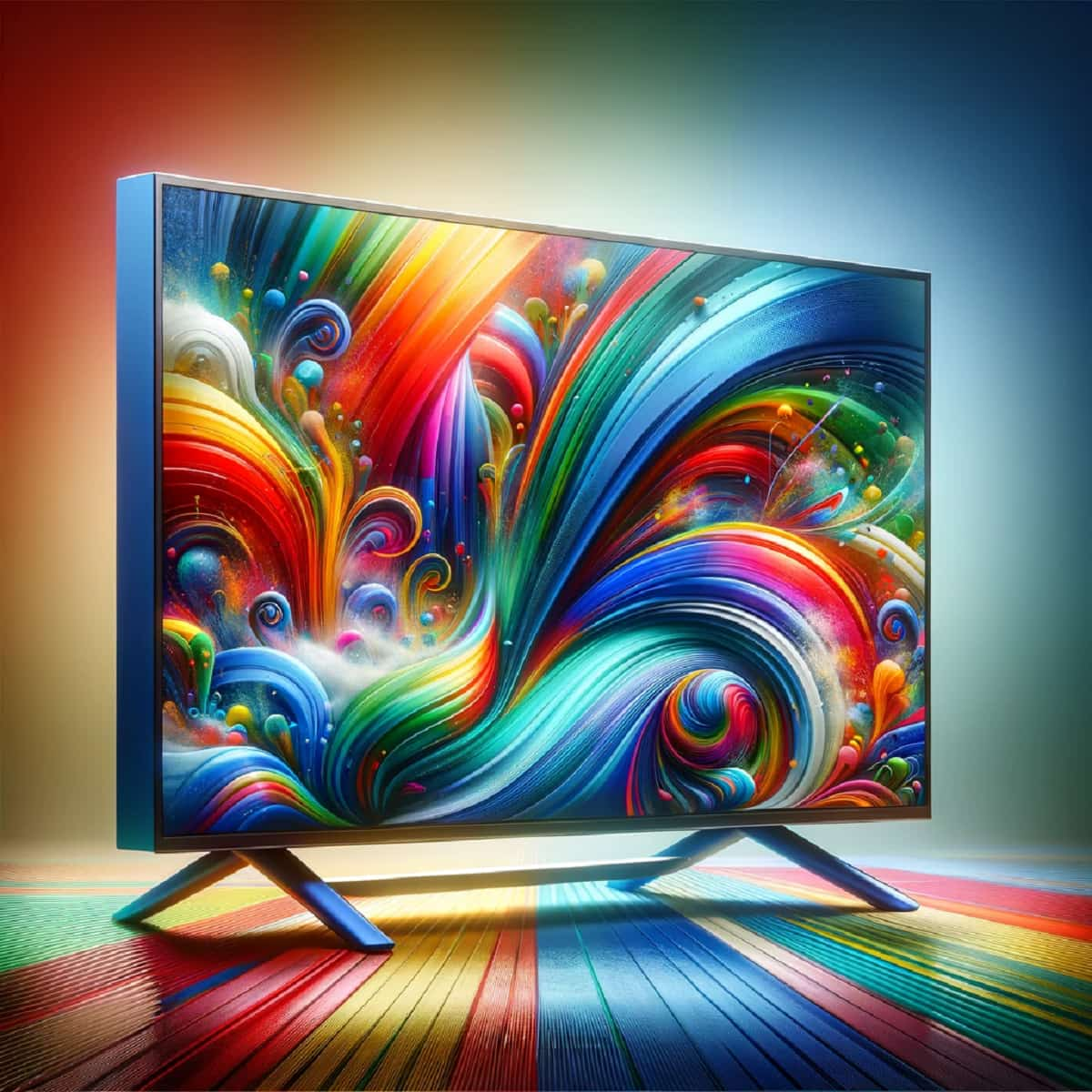Choosing the right smart TV involves understanding its performance, usability, and brand-specific features. This guide will walk you through analyzing Android TV performance, usability tips, and what makes different brands stand out. Whether you’re upgrading your current TV or buying a new one, this information will help you make an informed decision.

Performance and Usability Analysis
Analyzing the User Interface of Android TVs: Pros and Cons
The user interface (UI) of Android TVs plays a crucial role in how easy and enjoyable your TV experience is. Here’s a quick breakdown of the pros and cons:
- Pros:
- Customization: Android TV allows you to personalize your home screen and app layout.
- Integration with Google Services: Access to Google Assistant, Google Play Store, and other Google services enhances functionality.
- Voice Control: Integrated voice control makes navigating easier.
- Cons:
- Complexity: The vast number of features and settings can be overwhelming for some users.
- Inconsistent Updates: Updates to the UI and features may not be as frequent or consistent as you’d like.
Understanding these pros and cons helps you decide if Android TV’s UI meets your needs.
Real-World Performance of Android TVs in 2024
In 2024, Android TVs are known for their:
- Improved Speed: Faster processors and better optimization provide smoother performance.
- Enhanced Picture Quality: Better resolution and color accuracy contribute to a superior viewing experience.
- Fewer Interruptions: Recent updates have addressed many common performance issues, reducing lag and crashes.
Overall, Android TVs offer a high-performance experience but can vary based on the model and manufacturer.
Why Android TV Apps Often Lag: A Technical Analysis
Laggy apps on Android TV can be frustrating. Common causes include:
- Processor Limitations: Some Android TVs use lower-end processors that struggle with demanding apps.
- Insufficient RAM: Limited RAM can cause apps to slow down or crash.
- Background Processes: Apps running in the background can use up system resources.
To address these issues, ensure your TV’s software is up-to-date, close unnecessary apps, and consider upgrading to a model with better specs if needed.
The Importance of Processor Speed in Android TV Performance
Processor speed is vital for smooth performance. Here’s why:
- Faster Processing: A more powerful processor can handle complex tasks, improve app responsiveness, and provide smoother navigation.
- Better Multitasking: High-speed processors allow for better multitasking, meaning you can switch between apps without noticeable lag.
When choosing an Android TV, look for models with faster processors to ensure optimal performance.
How to Improve Streaming Performance on Your Android TV
To enhance streaming performance:
- Check Your Internet Connection: A stable and fast connection is essential for smooth streaming.
- Update Your Apps: Ensure your streaming apps are up-to-date for the best performance.
- Clear Cache: Regularly clear the cache of your apps to prevent slowdowns.
By following these tips, you can enjoy a more reliable and enjoyable streaming experience.
A Look at Android TV RAM Management and Multitasking
RAM (Random Access Memory) affects how well your TV can handle multiple tasks. Issues with RAM management can lead to:
- Slow Performance: Limited RAM can cause your TV to slow down when running multiple apps.
- App Crashes: Apps may crash if they don’t have enough memory to function properly.
To manage RAM effectively, close unused apps and consider upgrading to a model with more RAM for better multitasking capabilities.
Top Issues Android TV Users Face and How to Fix Them
Common issues include:
- Slow Performance: Fix by updating the software, clearing cache, and checking for background apps.
- App Crashes: Ensure apps are updated and check if the TV’s RAM is sufficient.
- Connectivity Problems: Verify your internet connection and router settings.
Addressing these issues can significantly improve your Android TV experience.
The Best Android TV Settings for Optimal Performance
To optimize performance:
- Enable Developer Options: Access advanced settings and tweak performance-related options.
- Adjust Picture Settings: Set the picture mode to match your viewing environment.
- Update Regularly: Keep your TV’s software and apps up-to-date.
These settings can help you get the most out of your Android TV.
Battery Consumption and Power Efficiency in Android TVs
While Android TVs typically don’t run on batteries, power efficiency is still important:
- Energy Saving Modes: Use energy-saving settings to reduce power consumption.
- Turn Off When Not in Use: Switch off the TV to save energy when not in use.
Efficient power usage not only saves energy but also extends the lifespan of your TV.
How to Speed Up an Old Android TV: Tips and Tricks
To give your old Android TV a performance boost:
- Clear Cache: Regularly clear the cache to free up space and improve speed.
- Uninstall Unnecessary Apps: Remove apps you no longer use.
- Factory Reset: As a last resort, a factory reset can resolve persistent issues.
These steps can help rejuvenate your older Android TV.
Brand-Specific TV Insights
What Makes Sony Android TVs Stand Out?
Sony Android TVs are known for:
- Superior Picture Quality: Sony’s advanced display technologies deliver excellent image clarity.
- Triluminos Display: Provides richer colors and more accurate hues.
- Integrated Audio Technology: Enhanced sound quality with features like Dolby Atmos.
Sony’s focus on quality and innovation sets its Android TVs apart.
A Detailed Review of Samsung’s Tizen OS for Smart TVs
Samsung’s Tizen OS offers:
- User-Friendly Interface: Easy-to-navigate menus and a streamlined experience.
- Smart Hub: A central place for accessing apps, settings, and connected devices.
- Integration with Samsung Devices: Seamless interaction with other Samsung products.
Tizen OS is designed to offer a smooth and integrated smart TV experience.
Why LG’s webOS is a Popular Choice Over Android TV
LG’s webOS is popular because:
- Intuitive Interface: Simple, user-friendly interface with easy access to apps and settings.
- Magic Remote: Allows for easy navigation with point-and-click functionality.
- ThinQ AI: Integrates with LG’s smart home ecosystem for added convenience.
webOS focuses on ease of use and seamless integration with LG’s ecosystem.
Xiaomi’s PatchWall vs Google TV: Which is Better?
Xiaomi’s PatchWall and Google TV offer different experiences:
- PatchWall: Known for its content aggregation and personalized recommendations.
- Google TV: Offers a broader app ecosystem and integration with Google services.
Choosing between them depends on your preference for content discovery and service integration.
How TCL and Hisense Compete with Premium Android TV Brands
TCL and Hisense compete by:
- Offering Value: Providing high-quality features at competitive prices.
- Innovative Features: Incorporating advanced technologies and design elements.
- Aggressive Pricing: Offering budget-friendly options with good performance.
These brands provide strong competition to premium Android TV brands by delivering value and innovation.
What to Expect from OnePlus TVs in 2024
OnePlus TVs in 2024 are expected to feature:
- High-Resolution Displays: 4K and potentially 8K options for better picture quality.
- Optimized Performance: Fast processors and efficient software for smooth operation.
- Smart Features: Integration with OnePlus smartphones and advanced AI capabilities.
OnePlus aims to combine high performance with smart features in their upcoming TV models.
The Advantages of Buying a Sony vs Samsung Smart TV
When choosing between Sony and Samsung:
- Sony: Known for superior picture quality and advanced audio technologies.
- Samsung: Offers a versatile Tizen OS, innovative display technologies, and a wide range of smart features.
Your choice will depend on your priorities for picture quality, smart features, and brand preference.
Understanding Philips’ Approach to Android TV
Philips focuses on:
- Ambilight Technology: Adds ambient lighting around the TV for a more immersive experience.
- Android TV Integration: Provides access to a wide range of apps and services.
- Picture Quality: Emphasizes high-quality displays and advanced color technologies.
Philips combines unique features with Android TV’s capabilities for a distinctive viewing experience.
Comparing the Smart TV Offerings from Realme and Xiaomi
Realme and Xiaomi offer:
- Realme: Known for budget-friendly options with competitive specs and features.
- Xiaomi: Offers a range of smart TVs with PatchWall and a focus on value for money.
Both brands provide cost-effective options with good performance, catering to different user needs.
What is Special About Panasonic’s Android TV Lineup?
Panasonic’s Android TVs stand out due to:
- High-Quality Displays: Emphasis on color accuracy and display clarity.
- Advanced Processing: Enhanced performance with powerful processors.
- Integrated Features: Access to Google services and smart home integration.
Panasonic aims to deliver high-quality viewing experiences with their Android TV lineup.
By understanding these insights and comparisons, you can better navigate the smart TV market and choose the best option for your needs. Whether it’s performance, usability, or brand-specific features, this guide covers everything you need to make an informed decision.








